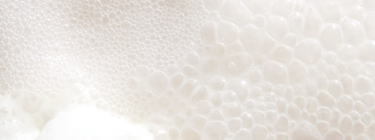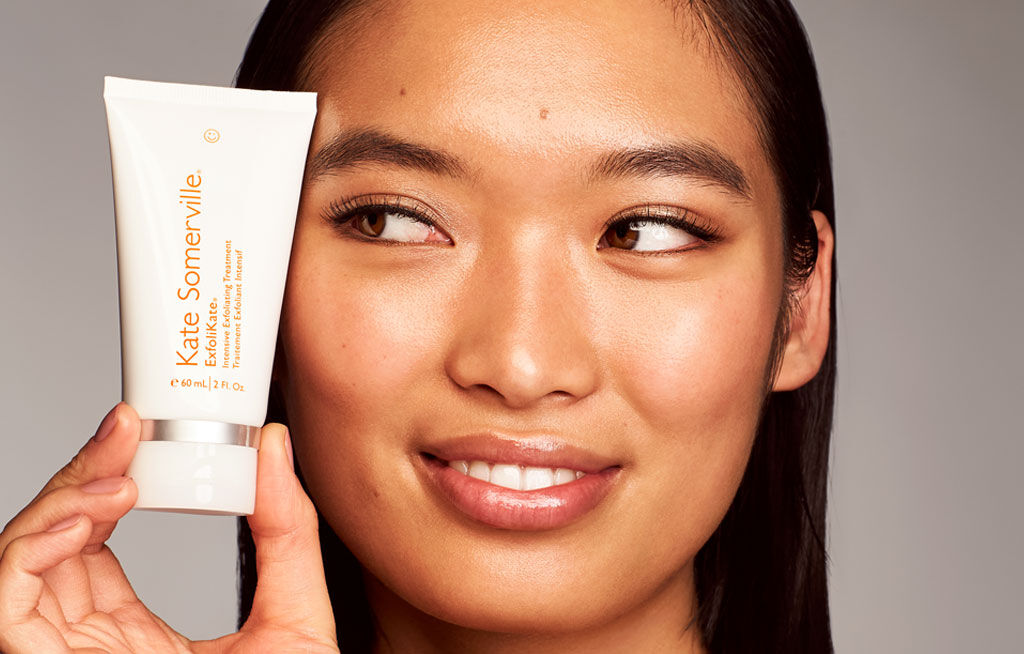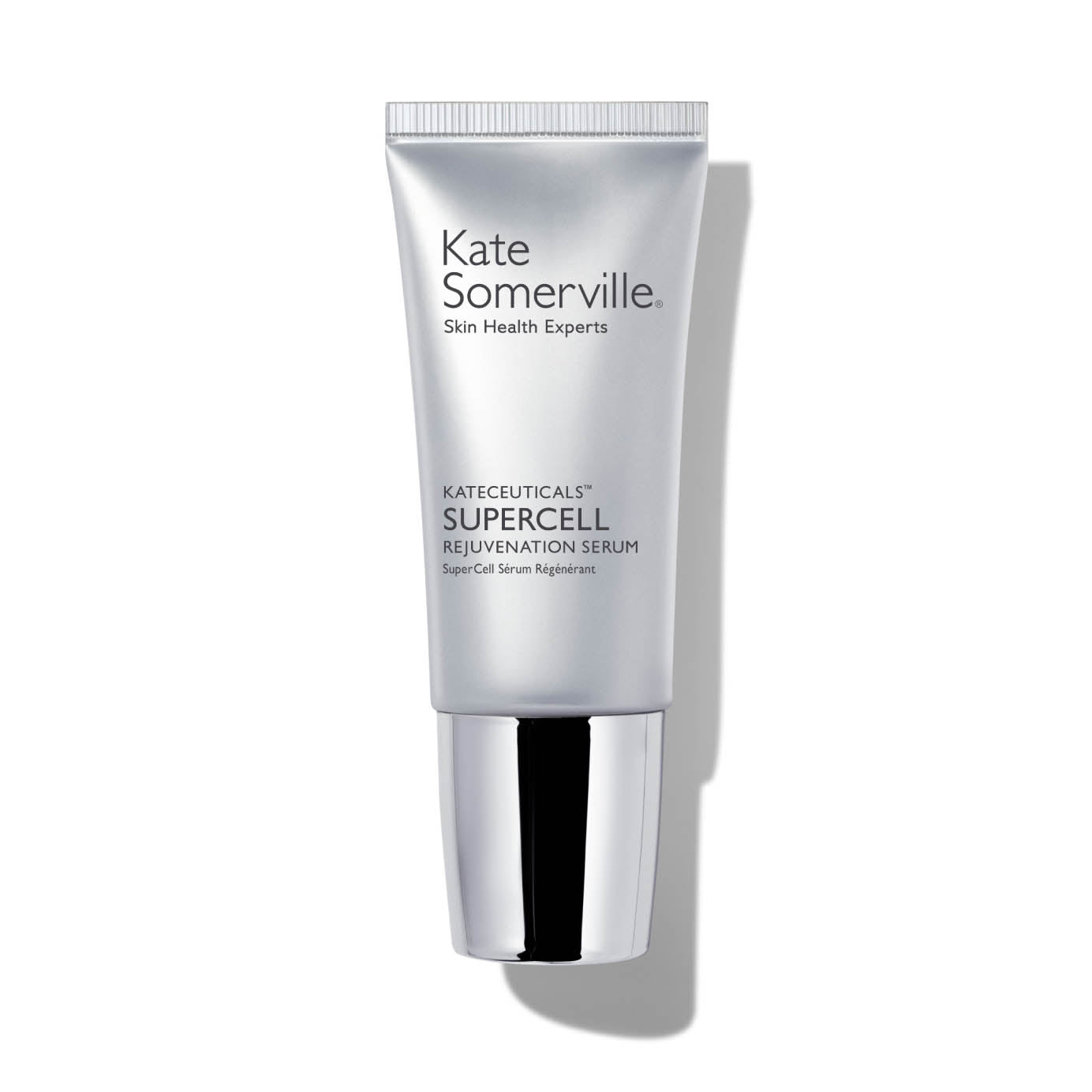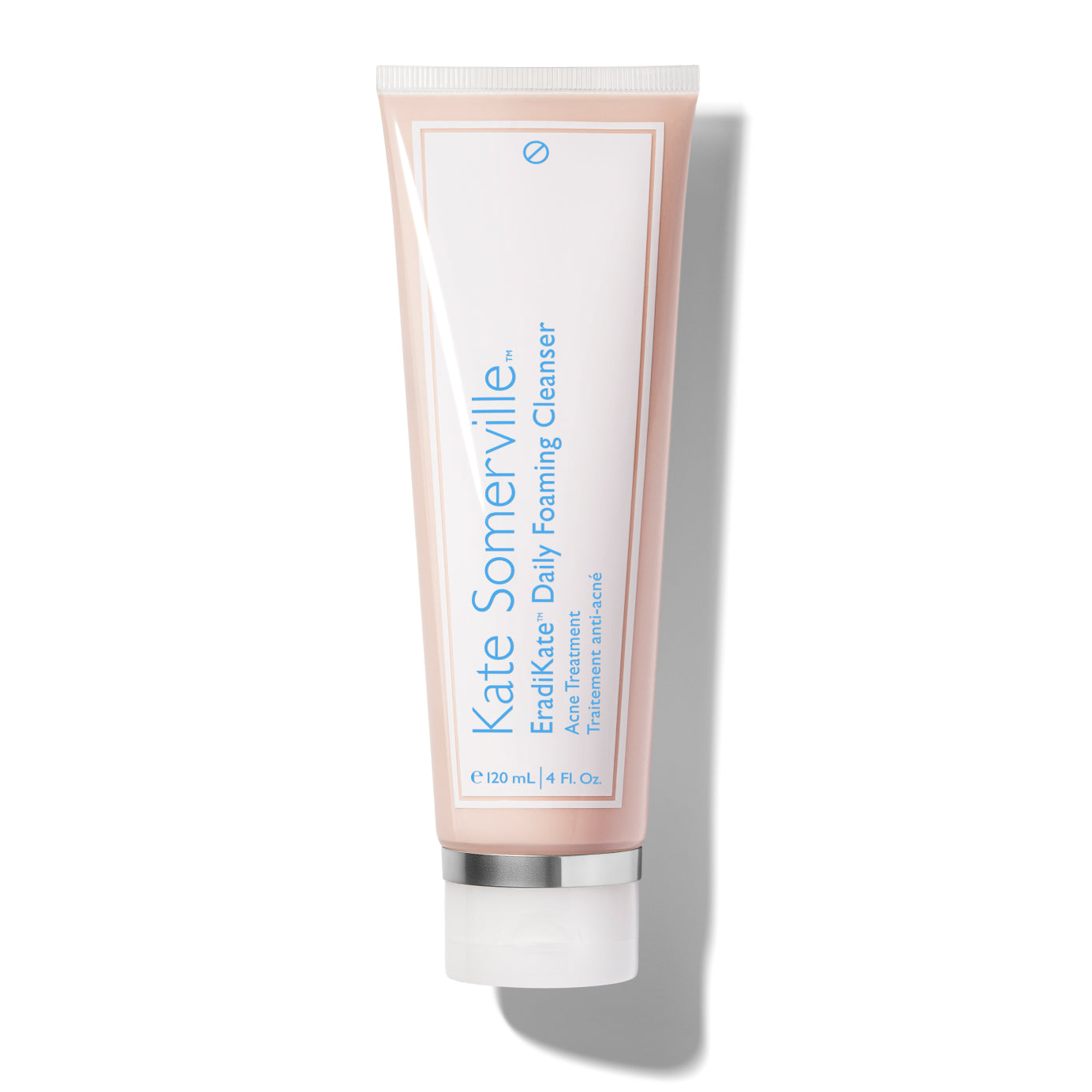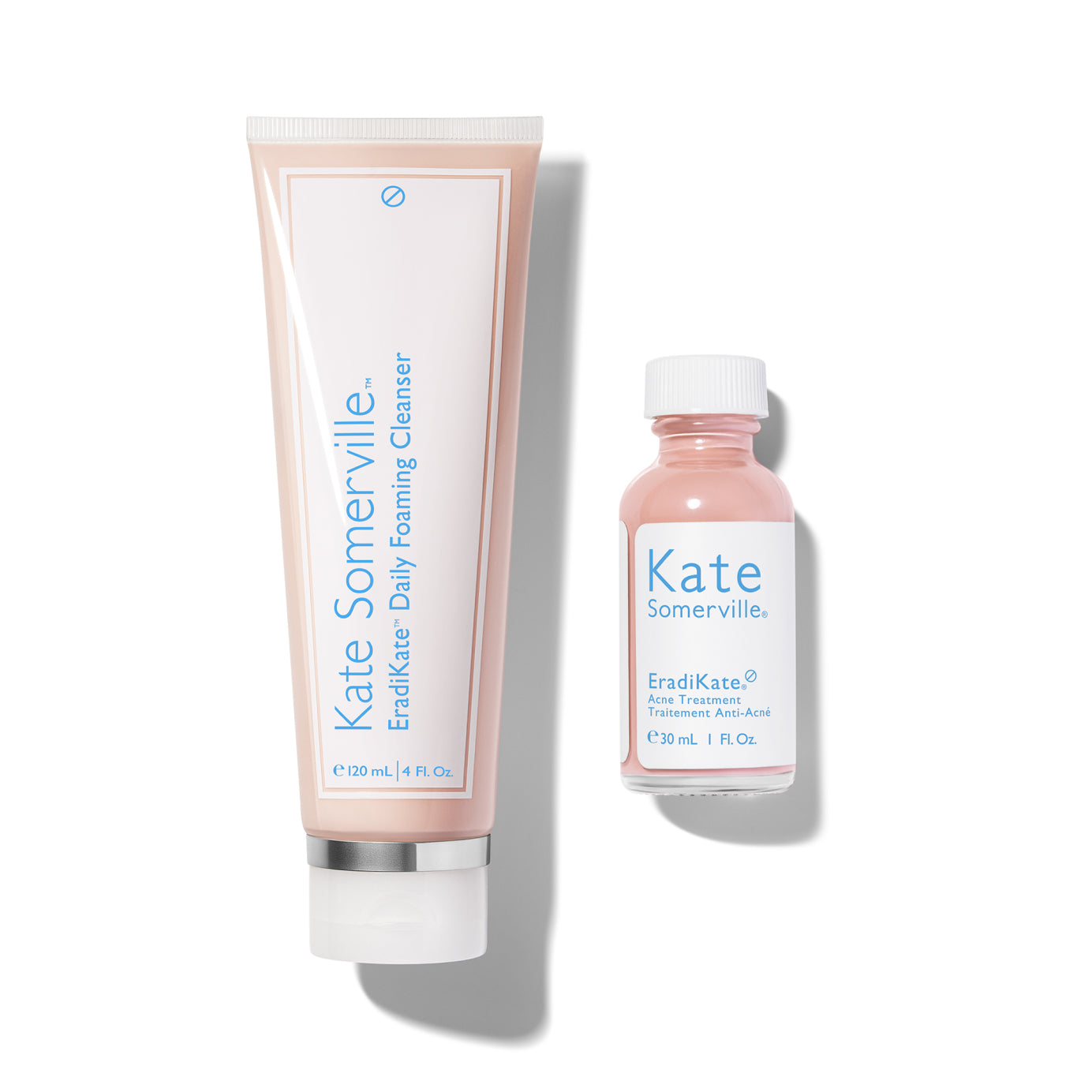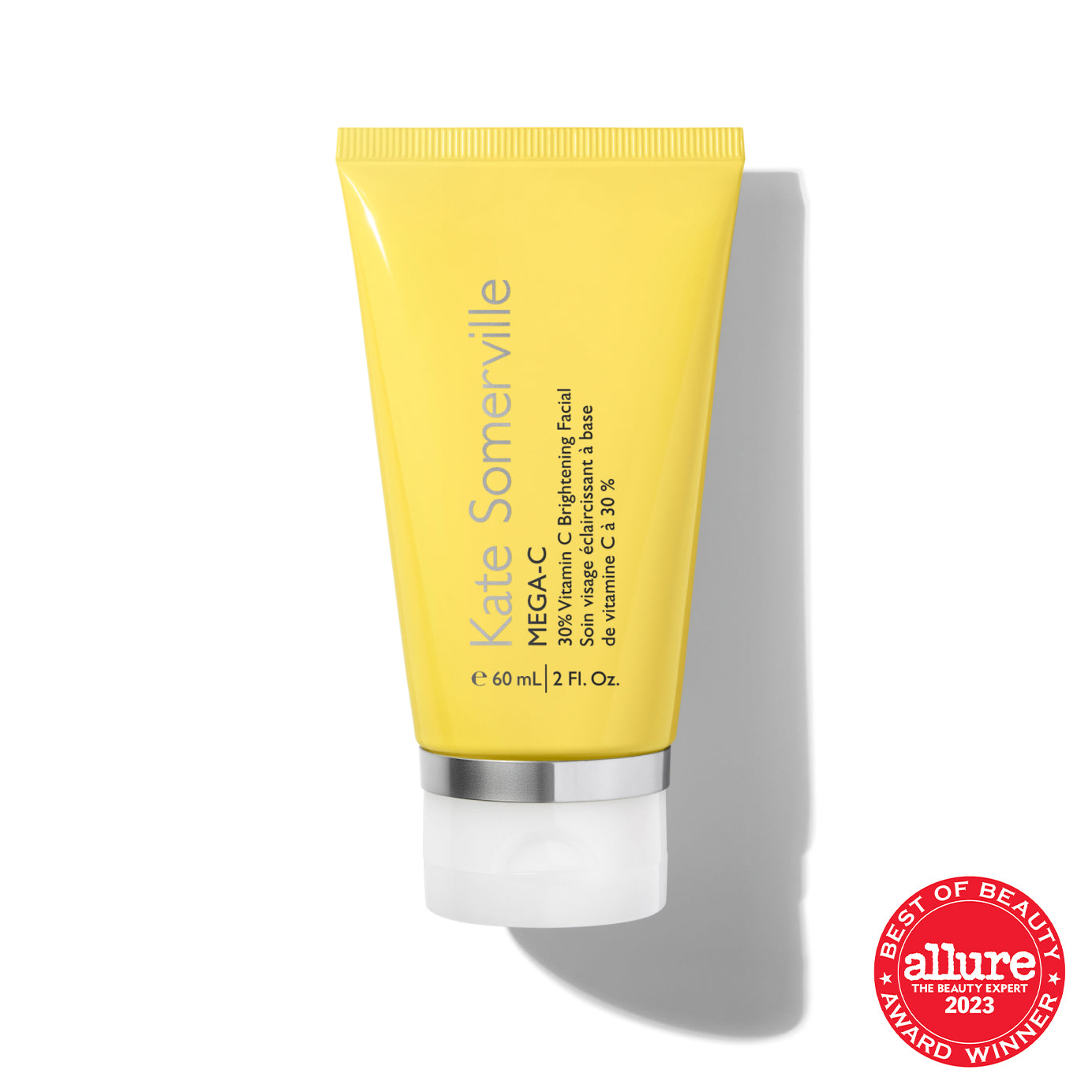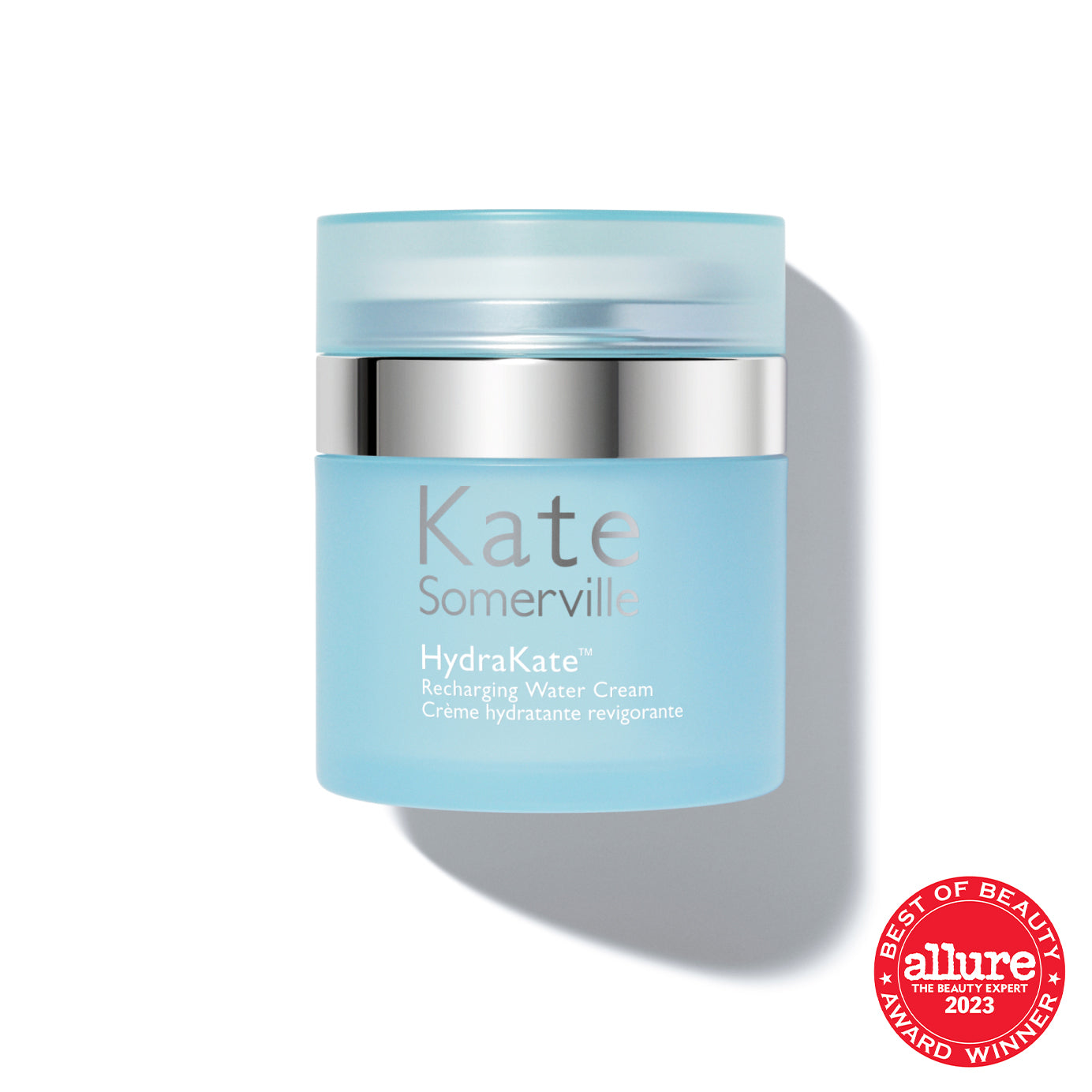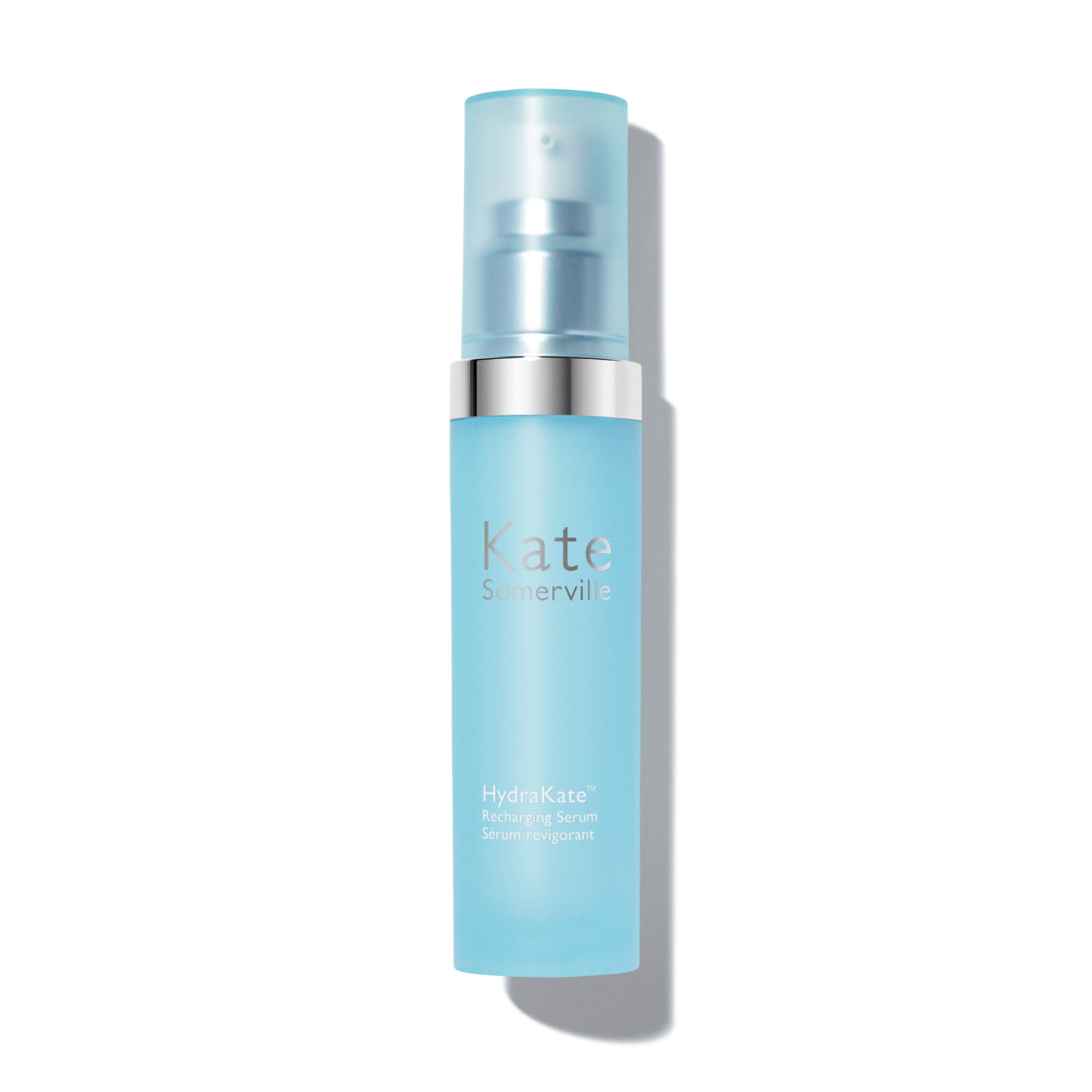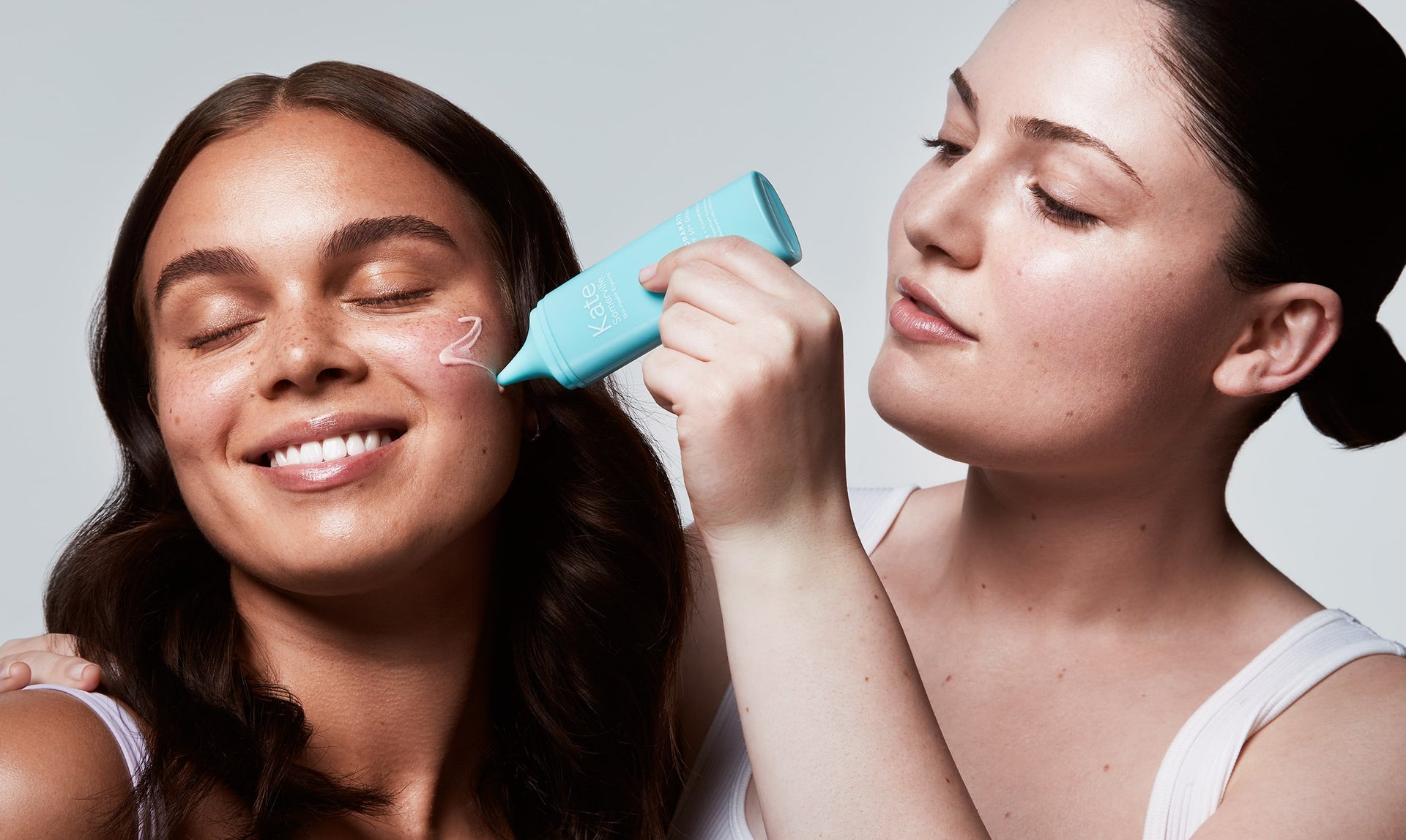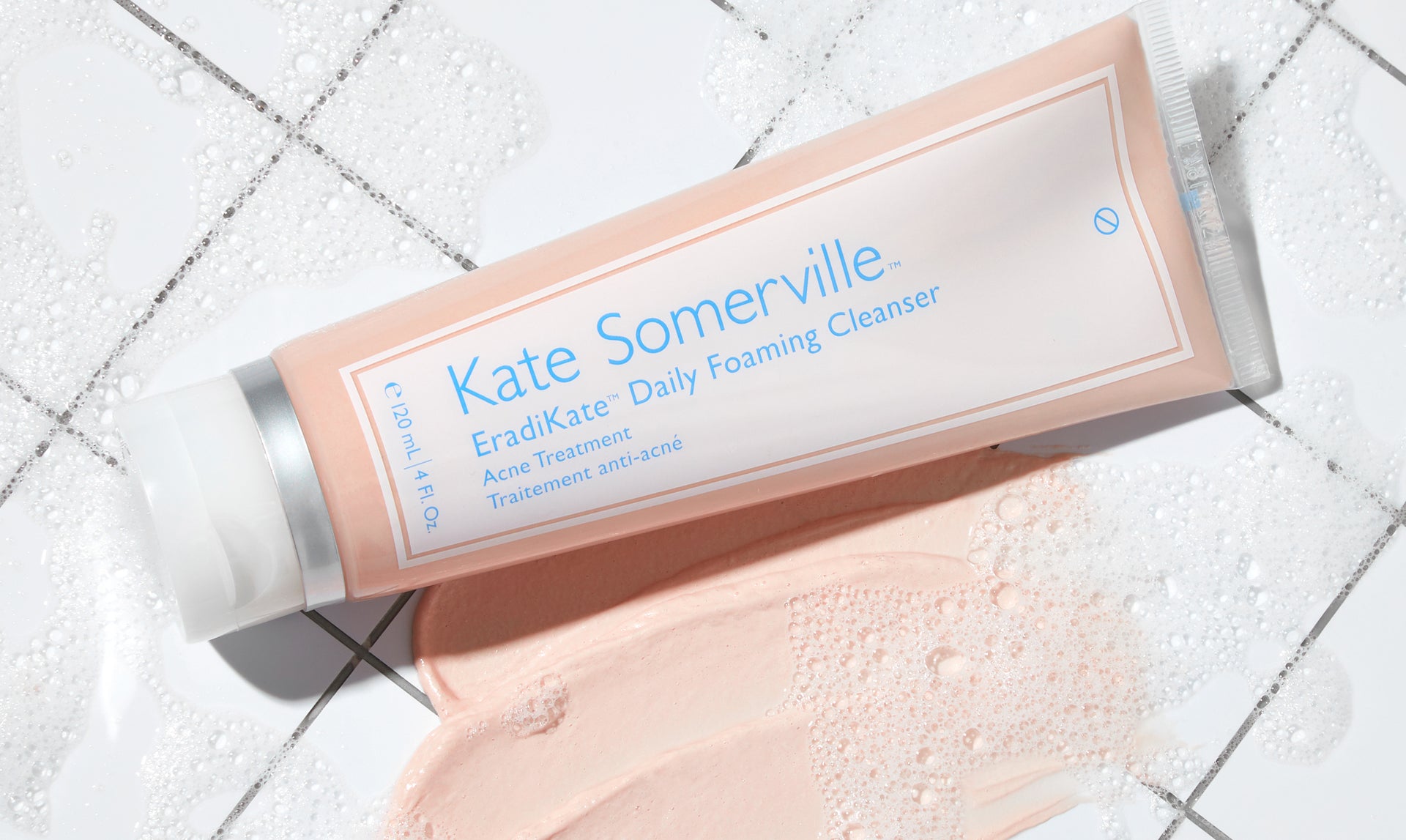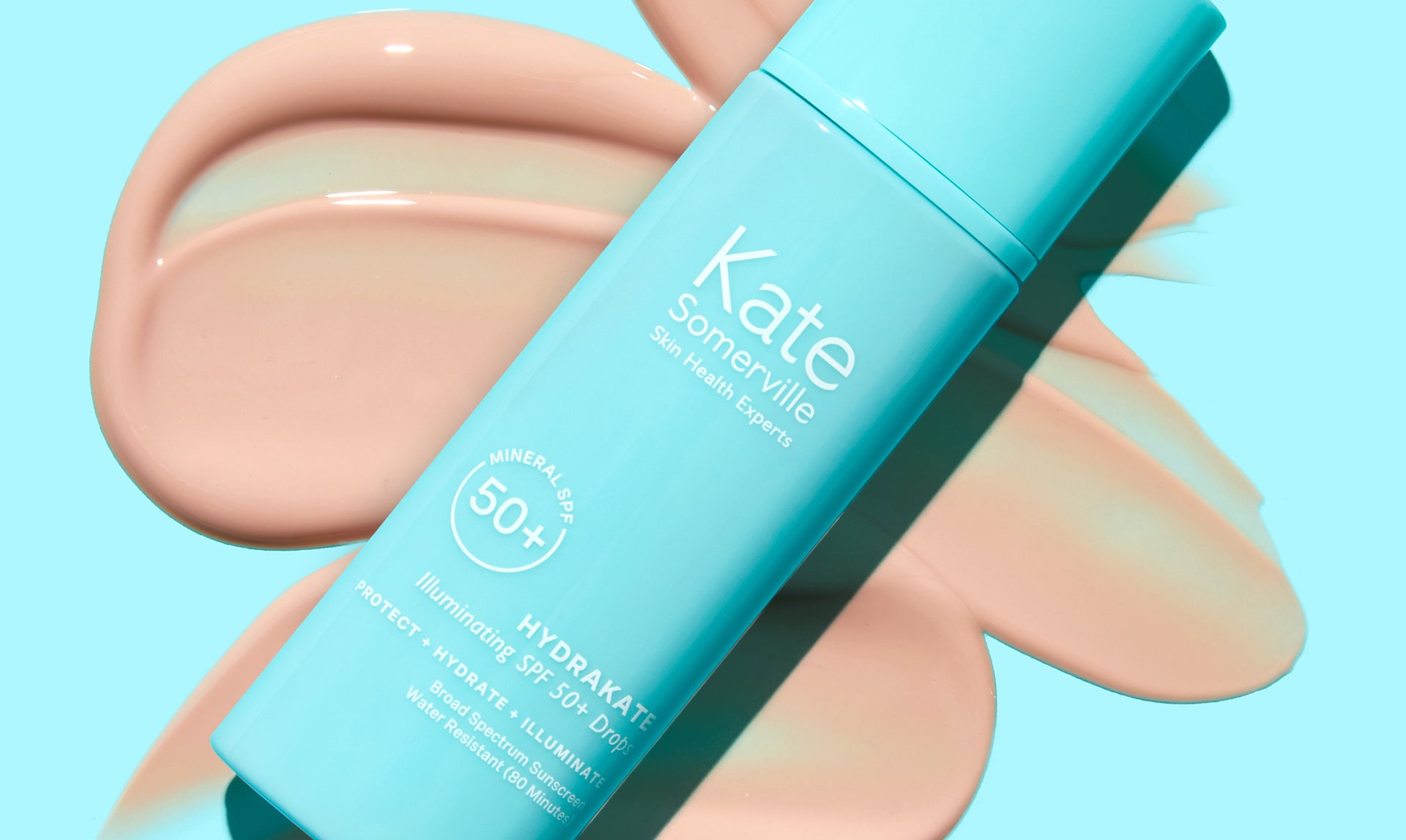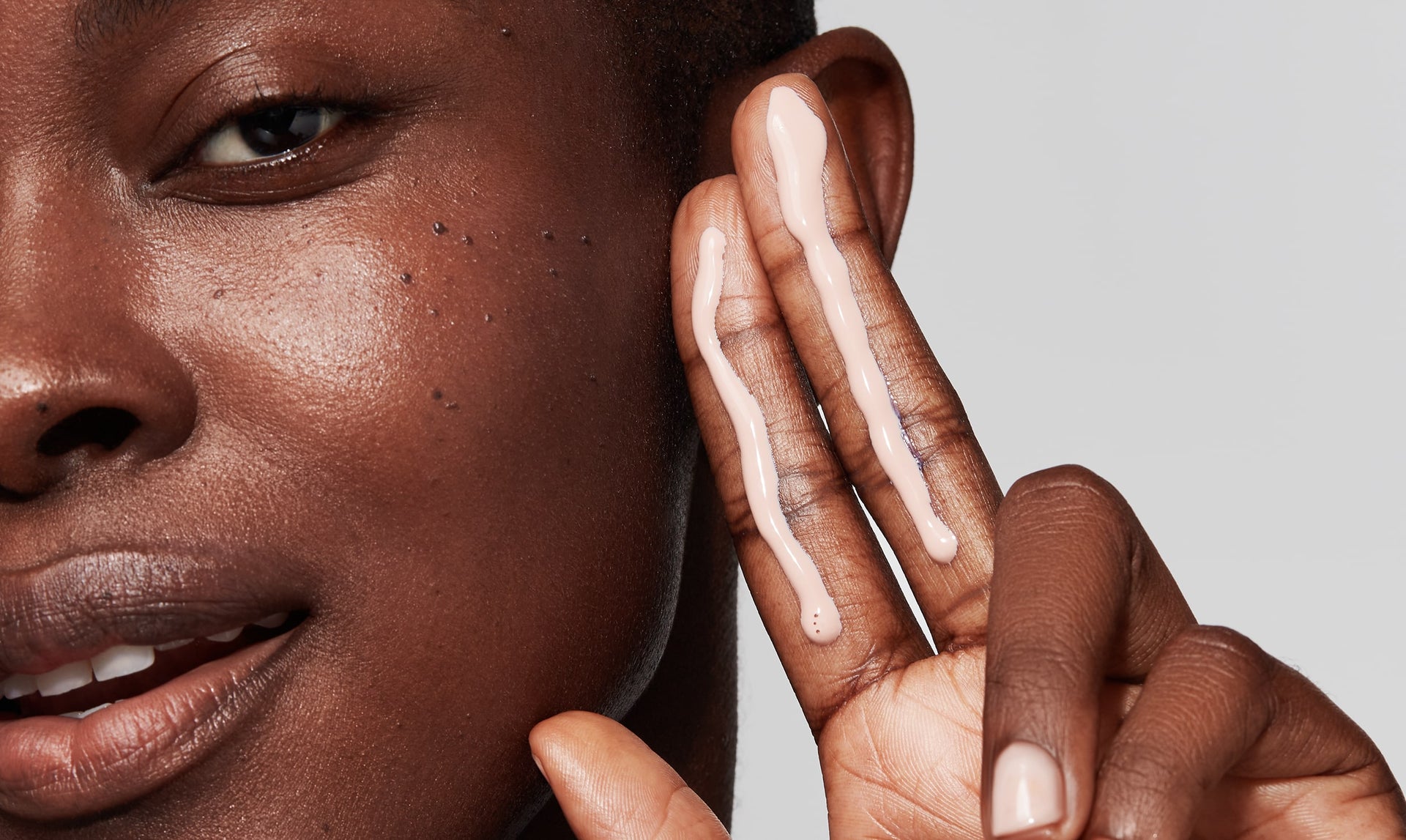Do you know your skin type? Is it considered oily, dry, or a combination of the two? Are you prone to clogged pores and breakouts due to excess oil, or are flaky patches on the face a challenge for you?
As Skin Health Experts, we treat specific skin concerns every day at our Los Angeles clinic. Because skin type affects the ingredients and products we recommend and use on our clients, it’s essential that we start each treatment with a skin type assessment. Then we do a gentle cleansing with the right cleanser based on skin type, followed by exfoliation that’s also customized to skin type.
Why facial exfoliation? Because, as our founder Kate often says, it’s the #1 way to transform skin. Exfoliation works as a face scrub to remove the top layer of dry skin and clean out your pores for a brighter complexion. It also helps to smooth the appearance of fine lines and wrinkles while improving the texture of your skin.
Regardless of skin type, you want to add exfoliation to your at-home regimen twice a week to achieve smoother, brighter, gorgeous skin. Below, we’ll define the three different types of exfoliation you should know and discuss how to identify the right option for your skin type.
What Are the 3 Types of Exfoliation?
Before you choose an exfoliation method, it’s helpful to grasp the differences between the 3 types of exfoliation. With a better understanding of each kind, you can feel confident when choosing the types of exfoliators that will be most beneficial for your skin type.
Physical Exfoliation
Physical exfoliation is just as it sounds: with this method, you’re physically rubbing dead skin cells away from your face. Many physical exfoliants exist in skincare product form—but you may already be an active user of this method and not even know it.
For example, think about how you remove your facial cleanser each night. When you’re rinsing it off, do you use your hands or a wet washcloth? If you chose option two, you’re already exfoliating each night using the fibers of your washcloth against your skin.
In short, physical exfoliation involves using a product, tool, or material to manually slough off your dead skin cells. This process clears the path for the new skin cells underneath. Within the realm of physical exfoliators, there are two main contenders to choose from, including:
Scrubs – Scrubs include tiny particles that work to physically “scrub” away dead skin. There are two types of particles commonly found in scrubs:
- Natural exfoliants – Exfoliants with natural ingredients are an ideal choice for people with sensitive skin. They’re often gentler and less likely to cause irritation. Many scrubs contain natural exfoliants that you might already have in your pantry, like finely ground sugar, ground coffee beans, and jojoba meal to rid you of that dull exterior layer of skin.
- Synthetic exfoliants – As the name suggests, synthetic exfoliants (like polyethylene beads) are manmade and can be beneficial for people with oily skin.
Tools – When it comes to exfoliating tools, a washcloth is only the tip of the iceberg. Depending on your skin type, you can choose from a variety of tools to help you remove that outer layer of skin cells, including:
- Facial cleansing brush – Made with soft bristles that gently remove the outermost layer of skin, facial cleansing brushes can be an excellent option for individuals with normal or oily skin.
- Exfoliating sponge – This is a softer alternative to a bristle brush. It gently exfoliates your skin and is less likely to cause irritation than some other tools.
Chemical Exfoliation
If physical exfoliants aren’t exposing the brighter, smoother, and all-around glamorous skin underneath, it might be time to add a chemical exfoliant to your skincare routine.
Made with a variety of different chemicals, these types of skin exfoliation pick up where the physical ones leave off. Depending on the chemicals in your particular formula, they’ll work to dissolve the remaining old skin cells to:
- Diminish fine lines and wrinkles
- Improve your skin’s overall texture
- Even out your skin tone to improve the appearance of acne scars, melasma, and photoaging
- Offer anti-inflammatory properties, which can lessen redness caused by acne, skin purging, rosacea, and other skin disorders
There are two main types of acids used in most chemical exfoliants. These ingredients begin working as soon as they make contact with your skin, so there’s no extra rubbing required on your behalf:
- Alpha-hydroxy-acids (AHAs) – Naturally occurring in various fruits, AHAs loosen dead skin cells by breaking down the protein (keratin) that attaches them to your skin. AHAs are typically gentler on your skin and help treat surface-level concerns like fine lines, hyperpigmentation, and enlarged pores. Commonly used AHAs include glycolic, lactic, tartaric, citric, and malic acid.
- Beta-hydroxy-acids (BHAs) – If you have acne-prone skin or have oily skin, BHAs are an exceptional exfoliant, as they penetrate deeper than AHAs. They also help to remove dead skin cells from inside your pores and get rid of excess sebum, a natural oil that moisturizes your skin). This may decrease your chances of future breakouts and help retain a healthier balance of oils if you have naturally oily skin.
Enzymatic Exfoliation
Enzymatic exfoliants are similar to chemical exfoliation in that there’s little scrubbing required—you simply apply them and let them work their magic.
However, this type of exfoliant offers a milder approach. Using natural fruit enzymes like papaya, pineapple, and pumpkin, enzymatic exfoliation carefully dissolves that pesky outer layer of dead skin cells.
Unlike some chemical exfoliants, enzymes are less likely to over-exfoliate. This leaves less room for irritation or inflammation afterward. That said, individuals with sensitive skin are the ideal candidates for this subtle yet effective method of exfoliation.
What Type of Exfoliation is Right for My Skin Type?
When it comes to exfoliation, there are so many options to choose from. You may find yourself wondering if you should pace yourself. Maybe you’ve considered beginning with a simple physical exfoliant before adding a chemical or enzymatic exfoliant to the mix.
But the bigger question is, how will you know if you’re on the right track for your skin type?
To reap the most benefits (aka healthy-looking, brighter skin you’ll want to show off) it’s essential to use the exfoliants that offer the most benefits for your skin.
Exfoliation for Dry Skin
Dry skin typically has a dull appearance and a rougher texture. You can add a combination of physical exfoliants to your skincare routine to give way to a brighter skin tone and softer, more supple skin.
A gentle exfoliant with a physical agent like silica sloughs away dead skin cells from the skin's surface but still keeps the protective barrier intact. Also, using a mild cleanser and a slightly abrasive tool such as a washcloth or body brush removes flaky areas for softer skin with a beautiful glow. Be careful not to rub the skin too abrasively, since this can cause small tears or inflammation.
When relying on chemical exfoliation, look for products that contain glycolic acid, which helps to brighten the skin tone. Whichever method of exfoliation you prefer, aim for twice a week to keep flaky skin away and leave your face feeling smoother and more supple.
Exfoliation for Oily Skin
If a shiny t-zone is your top skin concern, you most likely have oily skin. This happens when the skin produces too much sebum that sticks around and clogs pores. Oily skin is also hyper-prone to breakouts. Typically speaking, chemical exfoliation is a better choice for oily skin since physical techniques may inadvertently wreak havoc on the skin and cause bacteria to spread.
Powerful ingredients like salicylic acid break down impurities that live inside pores and help to regulate the skin’s oil production. Up your exfoliation to two to three times a week to combat oily skin and concurring breakouts. It will leave your complexion looking and feeling super clean and more radiant.
Exfoliation for Combination Skin
Combination skin means you have the challenges of both oily and dry skin to deal with at the same time. You may have an oily forehead and nose, but dry patches along the cheeks and jawline. Just like with dry skin types, you can incorporate a chemical exfoliation with glycolic acid to combat flaky skin while also removing pore buildup. However, you may benefit from salicylic acid as well to take care of the greasier spots.
Exfoliation for Sensitive Skin
Do you experience rashes, redness, irritation, or burning of your skin? These are symptoms of sensitive skin. You’ll want to be careful not to exfoliate too often or scrub the skin too hard with your exfoliator. A soothing ingredient like lactic acid helps to nourish the skin and minimize flare-ups.
Exfoliate once or twice a week, depending on your level of skin sensitivity. If you experience inflammation or prolonged redness, switch to an even gentler option, like using enzymatic gentle exfoliation once a week, and see if that improves the skin’s condition. It’s possible that over-exfoliation is irritating your skin. However, if it still continues after a week, consider seeking professional advice from a dermatologist or esthetician.
By identifying which types of exfoliation and frequency works best for your skin type, you’ll experience healthier, gorgeous, glowing skin. Add this step to your weekly skincare regimen to see and maintain your radiant results. When you use our Kate Somerville ExfoliKate® Intensive Exfoliating Treatment, you get a clinic-inspired treatment from the comfort of home that’s formulated to unclog pores, get rid of dead skin cells, and condition and smooth skin texture at the same time.
How to Handle Changing Skin Conditions
Keep in mind that your skin may change from time to time based on lifestyle shifts, including:
- Nutrition deficiency or dehydration
- Increased stress
- Aging
- Hormonal shifts
- Extreme weather conditions
For example, increased stress can cause your skin to sag or appear dull even if your skin type is oily. Alternatively, excessive sweating in the summertime can cause typically dry skin to be more acne-prone. The type and frequency of exfoliation that’s best for your skin may change depending on the season or what condition your skin is currently in. Adapt your skincare routine to what it needs in the present moment.
Exfoliation Benefits for All
As Skin Health Experts, we work with our clients to create and customize skincare regimens based on skin type. To discover healthy, beautiful skin at home, start with the basics and add steps as needed. Many people often get confused about the order of steps in a skincare routine such as whether you exfoliate or cleanse first. But, the easiest plan to follow is our 5 Daily Dos:
- Cleanse/Remove Makeup
- Exfoliate
- Hydrate
- Moisturize
- Protect with SPF (day use)
Remember, the key to achieving and maintaining healthy-looking skin lies in consistency. Exfoliating twice a week with ExfoliKate® will reveal a noticeable difference—even after just the first use! The surface of your skin will feel softer and smoother than before. After using for several weeks on a regular basis, you’ll see a significant improvement to your skin texture and pores.
Add exfoliation to your skincare regimen and start seeing the results appear on your face. For additional guidance, check out what the experts have to say about this skincare step with these esthetician tips for exfoliation! Once you’ve figured out your skin type and preferred exfoliation method, you’re well on your way to clear, more luminous-looking skin.
Sources:
American Academy of Dermatology. How To Safely Exfoliate At Home. https://www.aad.org/public/everyday-care/skin-care-secrets/routine/safely-exfoliate-at-home
Research Gate. Formulation, development and comparative study of facial scrub using synethetic and natural exfoliant.
https://www.researchgate.net/publication/303835757_Formulation_development_and_comparative_study_of_facial_scrub_using_synethetic_and_natural_exfoliant
NIH. Exfoliative Skin-peeling, Benefits from This Procedure and Our Experience.
https://www.ncbi.nlm.nih.gov/pmc/articles/PMC4720453/
NIH. Hydroxy Acids, the Most Widely Used Anti-aging Agents.
https://www.ncbi.nlm.nih.gov/pmc/articles/PMC3941867/
Journal of Cosmetic Dermatology. An overview of the use of proteolytic enzymes as exfoliating agents. https://onlinelibrary.wiley.com/doi/10.1111/jocd.14673
